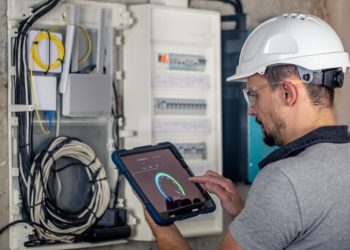In an era where digital screens, tablets, and smart boards dominate classrooms and offices, it may seem surprising that the traditional whiteboard continues to be such an important tool. Yet, despite technological advancements, whiteboards remain a fixture in meeting rooms, classrooms, training centres, and even homes. Their simplicity, versatility, and cost-effectiveness make them indispensable for collaboration, teaching, brainstorming, and planning.
What Is a Whiteboard
A whiteboard is a glossy, smooth surface designed for non-permanent markings using dry-erase markers. Unlike chalkboards, which create dust and require constant cleaning, whiteboards offer a clean, efficient alternative. They are typically made from materials such as melamine, porcelain, or glass, each offering different durability and writing quality. Their reusability and ease of maintenance are what make whiteboards a practical choice across so many environments.
Why Whiteboards Are Still Popular
The enduring popularity of the whiteboard lies in its ease of use and adaptability. Anyone can pick up a marker and start writing without needing technical training or equipment. This makes whiteboards inclusive, allowing students, employees, and participants to collaborate in real time. They also provide a tactile, visual method of learning and sharing ideas that many people still prefer over digital-only tools. In offices and classrooms where flexibility is key, the whiteboard remains a reliable and accessible option.
The Role of Whiteboards in Education
In education, the whiteboard continues to play a central role. Teachers use it to present lessons, illustrate concepts, and engage students in interactive discussions. Students can also participate directly, solving problems or brainstorming ideas in front of their peers. The large surface area allows educators to display information clearly, ensuring visibility for all. Even with the rise of digital learning platforms, whiteboards support an interactive style of teaching that keeps students engaged and encourages collaboration.
Whiteboards in Offices and Workplaces
Workplaces in Melbourne and beyond rely heavily on whiteboards for planning, strategy sessions, and creative brainstorming. In meeting rooms, whiteboards serve as the focal point for idea mapping, goal setting, and workflow management. Teams often use them to outline projects, track progress, or highlight deadlines. The act of writing and erasing fosters a dynamic environment where ideas can be adjusted on the fly. For businesses, this flexibility makes whiteboards an irreplaceable tool for collaboration.
Whiteboards at Home
The whiteboard has also found a place in homes, particularly as more people embrace remote work and homeschooling. Families use whiteboards to manage schedules, write reminders, or track household tasks. Children often use smaller boards for practising math, drawing, or learning to write. For professionals working from home, whiteboards provide a physical space to organise tasks, brainstorm ideas, and reduce reliance on digital devices. This makes them an excellent tool for productivity and organisation in personal settings.
Types of Whiteboards Available
There are several varieties of whiteboards, each designed to suit specific needs. Melamine boards are affordable and lightweight, making them suitable for casual or home use. Porcelain or ceramic whiteboards offer greater durability and resistance to staining, ideal for schools and offices with heavy usage. Glass whiteboards, with their modern and sleek design, are popular in contemporary workspaces, providing a stylish yet functional alternative. Choosing the right type of whiteboard depends on factors such as frequency of use, location, and budget.
Advantages of Using Whiteboards
One of the main advantages of a whiteboard is its simplicity. It requires no power, software, or technical setup, making it easy to use at any time. Whiteboards are also reusable, reducing waste compared to paper-based alternatives. They encourage collaboration by providing a shared space for group contributions. Their large, visible surface area enhances communication, ensuring everyone is on the same page during lessons or meetings. These qualities make them a sustainable and practical choice for a wide range of applications.
Maintenance and Care for Whiteboards
While whiteboards are generally low-maintenance, proper care ensures they remain in good condition. Regular cleaning with appropriate solutions prevents ghosting, where old marker traces remain visible. Using high-quality dry-erase markers and erasers also extends the life of the board. For porcelain and glass boards, maintenance is minimal, as these surfaces resist staining and scratching. By taking simple steps, users can ensure their whiteboard continues to perform effectively for years.
The Future of Whiteboards
Even with the rise of digital collaboration tools, the whiteboard continues to evolve rather than disappear. Many workplaces now use hybrid solutions, such as interactive whiteboards that combine the benefits of traditional boards with digital connectivity. These allow users to save written content, share it with remote teams, and integrate with online platforms. Despite this technological shift, the traditional whiteboard remains highly relevant due to its accessibility and affordability, ensuring it retains its place in modern spaces.
Why Whiteboards Are Worth the Investment
Investing in a whiteboard provides long-term value for schools, businesses, and homes alike. They support interactive learning, foster creativity, and encourage teamwork. For organisations, they enhance communication and streamline planning. For families, they provide structure and support for education at home. Given their low cost, durability, and versatility, whiteboards are an investment that pays off in productivity and engagement.
Conclusion: The Enduring Value of Whiteboards
The whiteboard has stood the test of time, proving its value in education, business, and personal settings. Its simplicity, flexibility, and effectiveness make it a tool that technology has not replaced but instead complemented. From classrooms and boardrooms to home offices, whiteboards continue to play a vital role in how people learn, plan, and collaborate. For those seeking an affordable and effective way to organise ideas and foster communication, the whiteboard remains an essential tool that delivers results.








